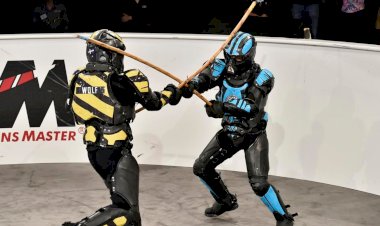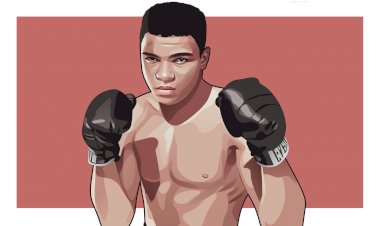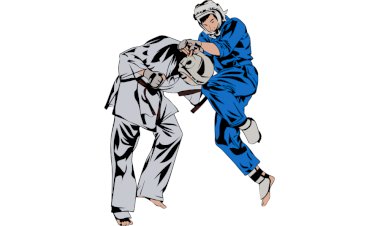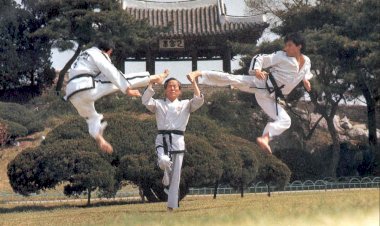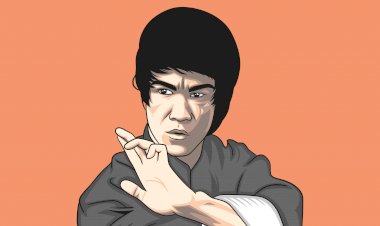Sumo the traditional Japanese wrestling
For most of us, watching Sumo wrestlers competing is a bit weird. However, by digging further into it, we can see that this martial art is very technical and has a lot of unique and intriguing history behind. Sumo wrestlers are not just the biggest athletes, they are among the most popular athletes in Japan and National heroes as well.
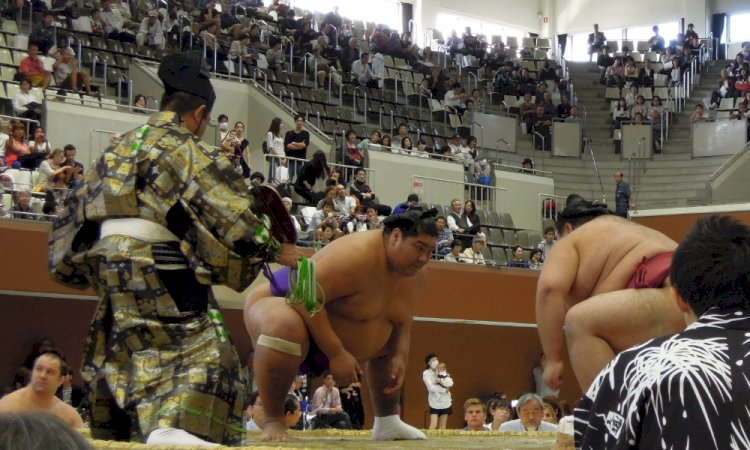
Name meaning: The word "sumo" means "to beat each other".
Date of origin: First mention in 712 AD
Country of origin: Japan
Combat elements: Various throws and punches with open hand
Weapons in use: None
The word sumo means “striking one another.” However, sumo wrestlers are actually known in Japan by the name of “rikishi” that means “strength/power.”
It is believed that the first form of Sumo was a ritual dance performed by the most powerful man in prayer to Gods for a good harvest. Also, the Kojiki manuscript from 712 is showing that the Japanese used wrestling matches to decide the possession of the Japanese Islands. But, the first-ever confirmed Sumo wrestling matches were held in 642 in the court of Empress Kogyoku. In the following centuries, Sumo became incredibly popular. What's more, it’s ceremonial and religious significance began growing as well.
However, the importance and growth of Sumo began to decline with the fall of the Emperor’s central authority during the Japanese Middle Ages. Sumo went becoming the part of the Samurai training and a relatively unknown until the 16th century. In this time, sumo began growing once again and the first wrestling tournaments began to emerge in Japan.
Most popularly, Oda Nobunaga organized the tournament with 1500 wrestlers competing in this castle. At these events, the Japanese introduced the dohyo which represents the Ring which Sumo still uses today. The present dohyo is 4,55 m or 14.9 feet in diameter and 16.26 m2.
Also, people began using Sumo to fight on the streets which harmed the already bad public image of the sport. With more and more violence on the streets, Sumo got banned in 1684. As a result, the first Sumo organization was developed and with that, first sanctioned tournaments were held in Tomioka Hachiman Shrine. The most famous wrestlers at that time were Raiden Tameemon, Onogawa Kisaburo, and Tanikaze Kajinosuke.
The turning point in the acceptance of Sumo came when Emperor Meiji personally organized the wrestling event in 1884. From then, Sumo became the National sport and symbol. The Japanese Sumo Association began organizing more and more tournaments per year which helped the sport growing even more.
We have to mention that for the majority of its history, Sumo included only Japanese wrestlers. However, in the last couple of decades, the sport opened its doors for the foreign wrestlers as well. What’s more, these high-profile wrestlers have become incredibly popular and they are enjoying great success competing at the highest ranks.
Sumo Divisions
Japanese Sumo Association divided Sumo into six different divisions. The new wrestlers (rikishi) must enter the lowest division (jonokuchi) and work their way towards the finest competition in the makuuchi division. The wrestlers in the lower divisions are known as “rikishi” while the wrestlers from the top two divisions are known as sekitori. Logically, makuuchi represents the pinnacle of Sumo, and its fighters are the most famous ones. Also, each division is limited by the number of wrestlers as you can see below. Combined, sumo divisions have around 640 wrestlers:
- Makuuchi (42 wrestlers)
- Juryo (28 wrestlers)
- Makushita (120 wrestlers)
- Sandanme (200 wrestlers)
- Jonidan (around 200 wrestlers)
- Jonokuchi (around 50 wrestlers)
The sumo rules
The rules of the sumo competition are straight forward simple. The sumo can win a match by pushing the opponent outside the straw ring or force any part of the opponent’s body other than feet to touch the ground. Interestingly, there are no weight classes. However, some sumo organizations have minimum height requirements (5’8” or 173cm). In sumo, it is all about agility and the ability to use the opponent’s momentum against him. During the matches, the following actions are forbidden:
- Hair pulling
- Eye pokes
- Throwing punches
- Chokeholds and joint locks
- Grabbing or striking the groins.
Traditional Wear
Looking at the sumo wrestler, you can see that they wear only a thick belt around the waist and their hairline is put in a topknot. However, there is a lot of meaning behind this. The 30-foot long belt is called Mawashi and it’s made under the strict thickness and strength requirements. Mawashi is an effective tool during the match as the sumo can grab onto the opponent's mawashi and use it to execute various moves.
Also, top sumo wrestlers wear mawashi made out of silk and different color. The lower wrestlers are limited to wear just black cotton. The sumo wrestlers have their own hairdressers called Tokoyama employed by the Japanese Sumo Association. Their hair is put in a topknot and the Tokoyama’s use a lot of wax to keep it in place. This style is called chonmage and it became incredibly popular during the Edo period.

